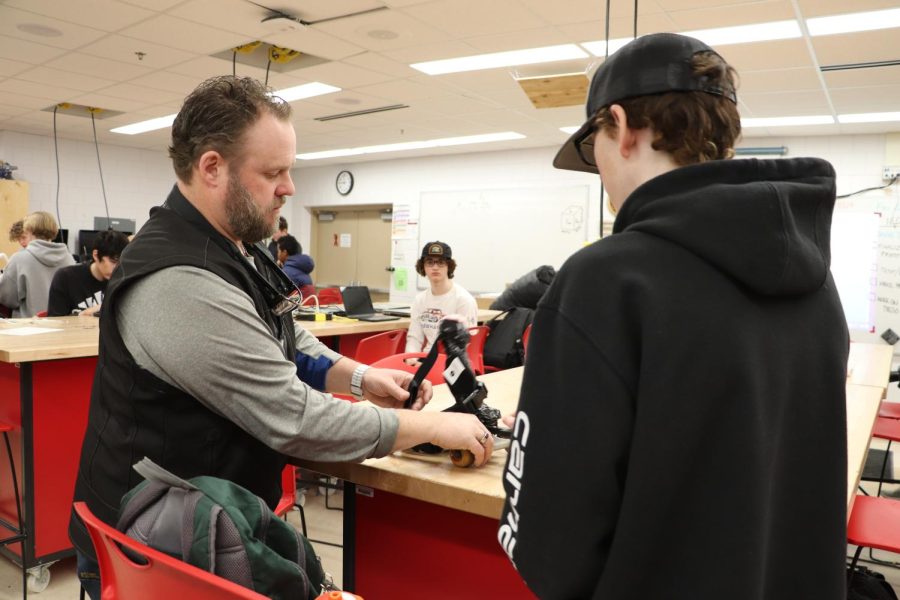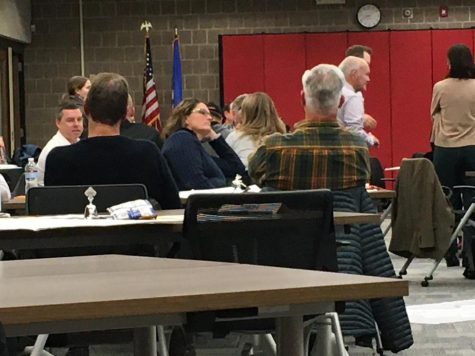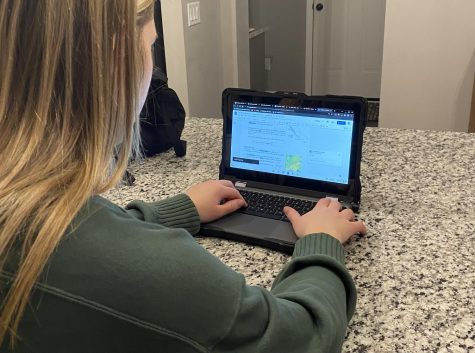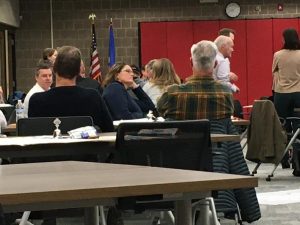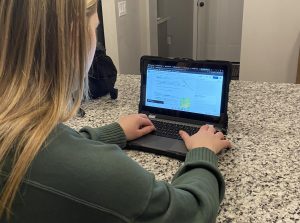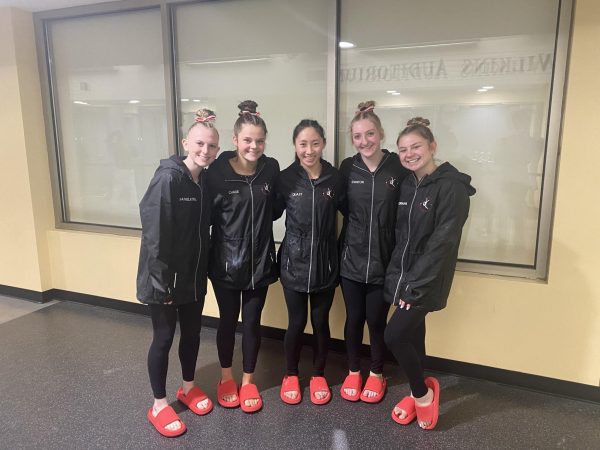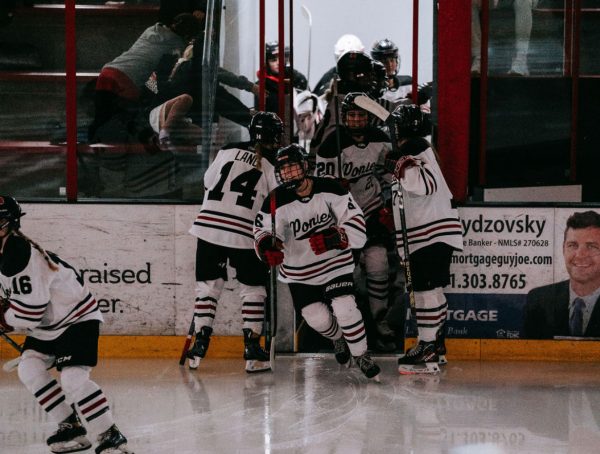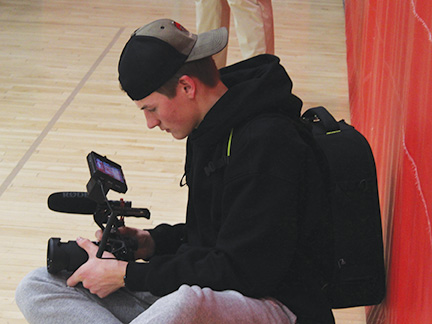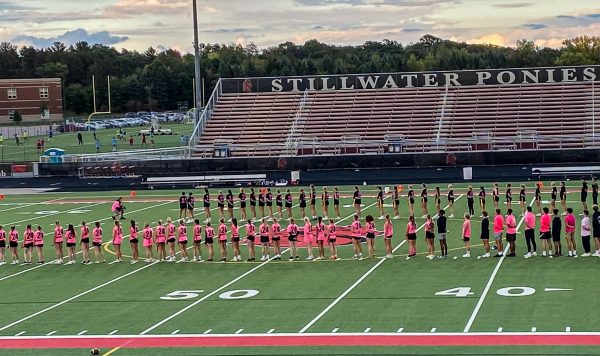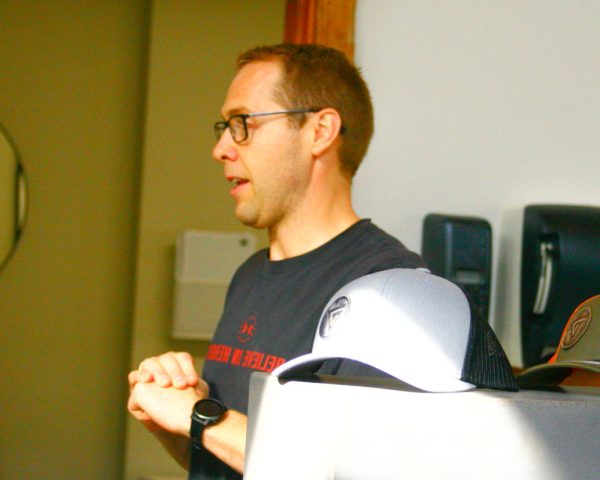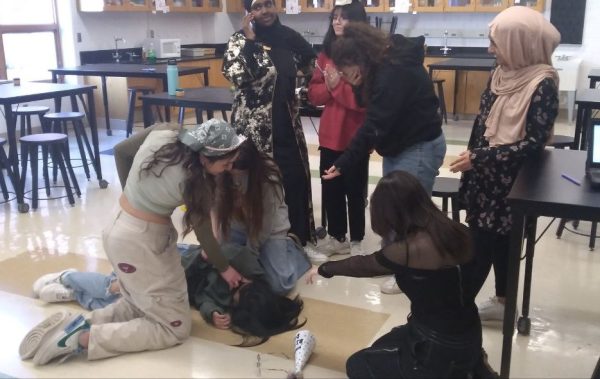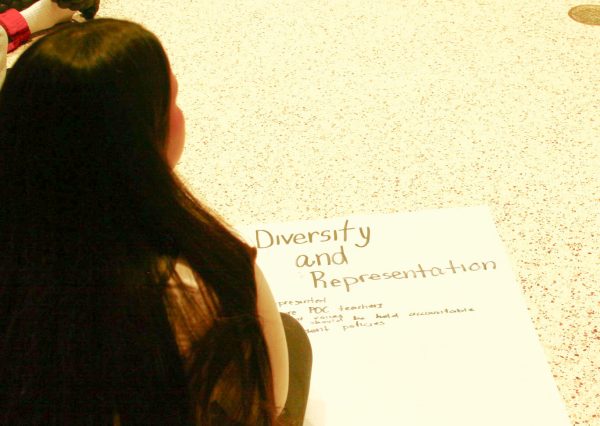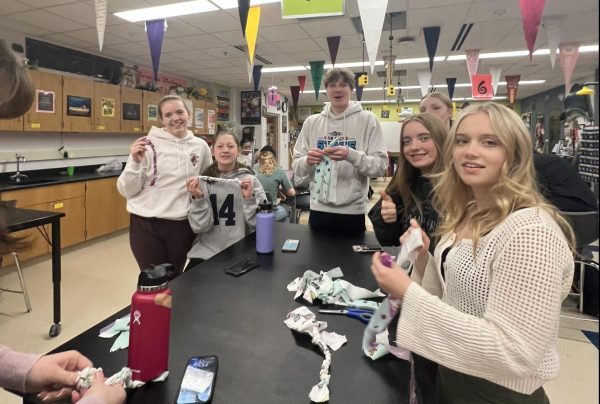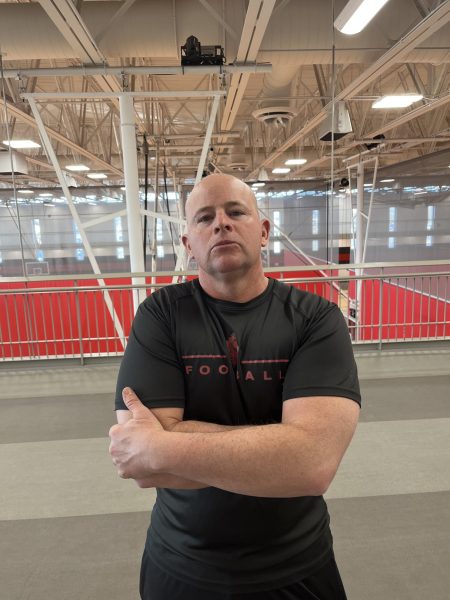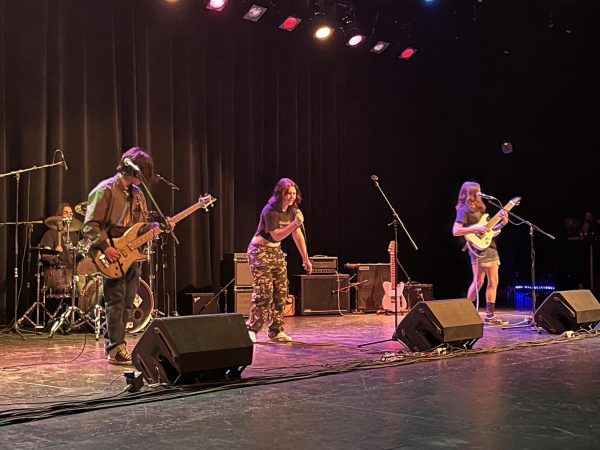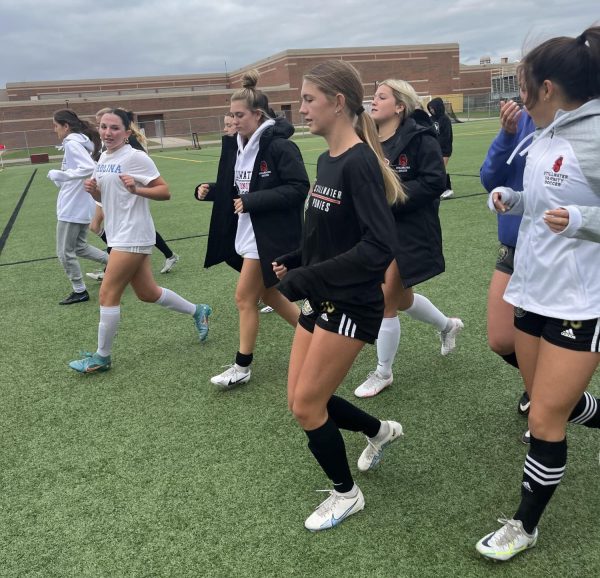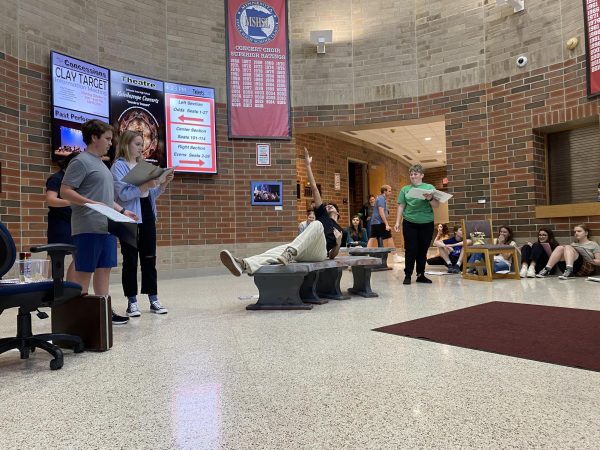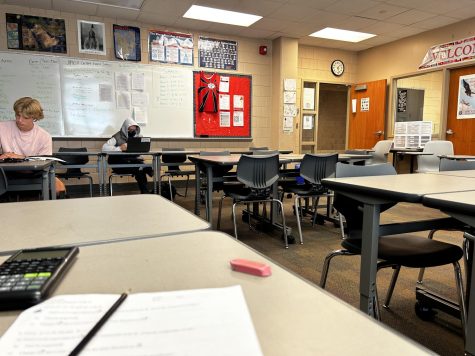Engineering students design prosthetic for disabled dog
Students in engineering class started a project where they needed to design some type of prosthetic for a disabled dog. The students were free to make any design they wanted, then build it and test it on the dog. The project gives students an excellent opportunity to deal with real-world engineering situations.
Students taking this class had the opportunity to use various materials like PVC pipe, wood and anything else that would work. Materials varied depending on what type of prosthetic the students wanted to design. The students were also responsible for buying the materials they wanted to use. They had a lot of creative freedom with this project allowing them to get a great hands-on learning experience.
“My group designed a kind of wheelchair contraption. So we used PVC to build a frame for it and then we used two wheels,” junior Sam Young said.
The goal for this project was to try and make a successful enough design so the dog would be able to walk easier and save energy. The problem came up when a para who works at the school brought up to Engineering teacher Matt Howe that the dog was having trouble with being able to stand for an extended period of time on her three legs. The dog came home every day extremely exhausted from having to walk around all day, she could not support her weight for that long of a time. When the idea was brought up Howe saw it as a perfect opportunity to give students a real-life hands-on experience in the engineering field.
“The goal of the project was to provide safety and support so she could walk because every time she would come home she would fall on her face and be exhausted from walking all day and from her arthritis, so we really wanted to support her front legs,” Young said.
But how did the dog come to have three legs? A couple of years ago the dog was ran over by a car and ended up having to get one of her front legs amputated because of this. This is not an uncommon thing though, over 1.2 million dogs are hit by cars every year in the United States alone, that’s over 3,000 dogs a day. Luckily over 80% of the dogs survive with minor or less severe injuries.
“A couple of years ago, she was run over by a car, and she lost one of her front legs and because of that it had to be amputated,” Young added.
Howe gave students complete creative freedom on this project to the students. They were allowed to choose which design they thought would work out best for the dog and have the best results like a wheelchair, peg, prosthetic, etc. Students were also responsible for going out and buying the materials they want to use for their design, most students used PVC pipes. Although some designs worked better than others, most designs were successful at supporting the dog.
“I would definitely say there was one type of design that worked better than others. Our design worked better than most and it was like a wheelchair with double support,” Young said.
So one of my big things with teaching is to find people in the community or companies or whoever is willing to work with us and have them come up with that our kids can be a part of because it just makes it that much more like a real-life experience.
— Matt Howe
Howe wanted to assign a real-world problem to students for them to solve and get a good hands-on experience. Students could see if they really did like an engineering job or not. Although the students still get a good learning experience with the other projects none of them have been like this. This project was different from other projects, they did not have to just design something on a computer and then do nothing with it, they got to make a design and bring it to life.
“I’ve felt a lot of projects we do or the work that students do isn’t always authentic. It’s not real-world. They’re learning a lot of different things, but they’re sitting at their computer and they’re just designing things and then they don’t actually get to make it,” Howe said.
These projects help our local community. According to Howe, these projects come up when someone in the community needs help with a project and contact him asking if the students can help. Companies also have reached out asking if the students can design something for them. Winter Fest held in downtown Stillwater reached out and asked if students could design the trophies for the winners of the event.
“So one of my big things with teaching is to find people in the community or companies or whoever is willing to work with us and have them come up with that our kids can be a part of because it just makes it that much more like a real-life experience,” Howe explained.
“Anytime I can come up with something that allows the kids to do hands-on stuff because I think the learning is that much more valuable when they’re doing hands-on work because they get a chance to see it,” Howe added.

My name is Jade Axel I am a junior at the high school. My job for the Pony Express is as a Podcast and Distribution Reporter. In my free time, I usually...



